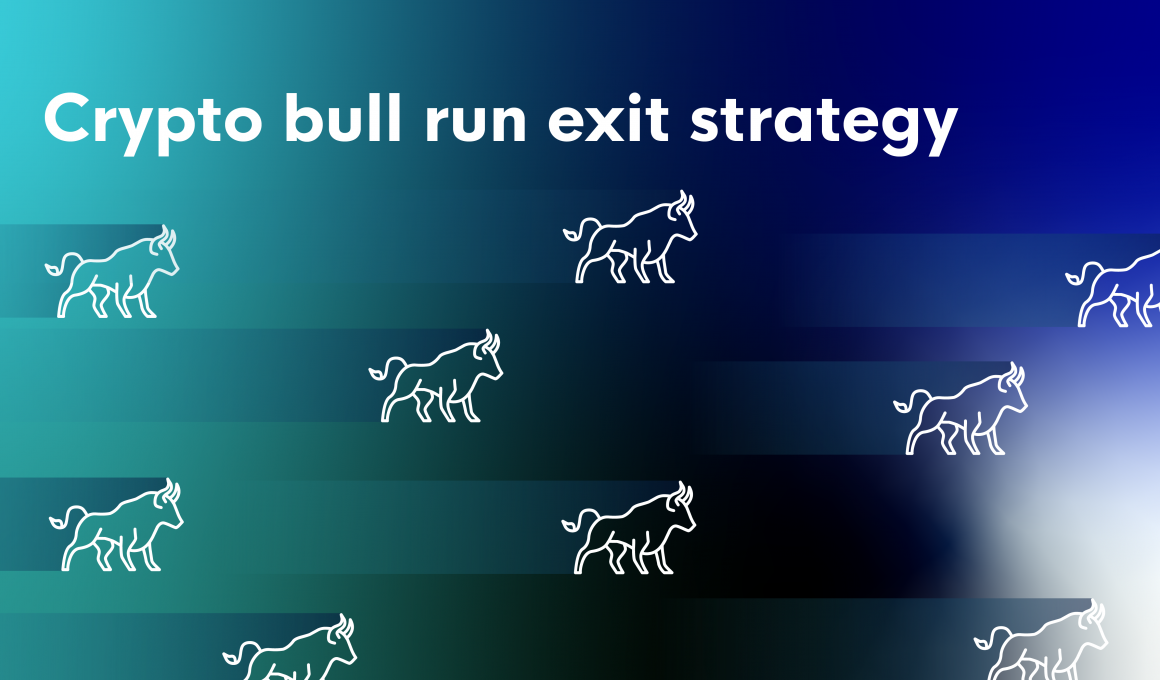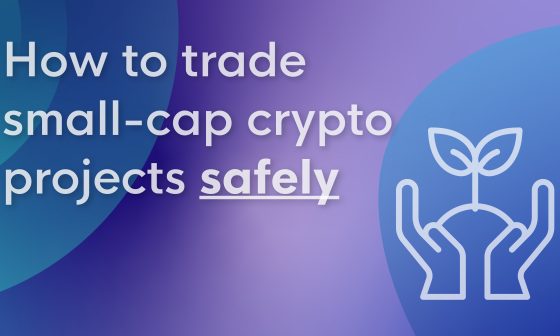Do you have an exit strategy in case crypto’s total market cap starts plunging just like it did this past week? All markets have a short-term memory when things are parabolic one way or another. Not to mention all the biases that plague trading behaviour.
When it’s a bull run, a dip is a godsent, but in a bear market all prices seem just damn high for you to buy in. Better wait.
Things can change in what feels like a second. Just ask those in crypto before 2018. There’s plenty of examples of traders that were caught off guard when the market turned, and they ended up losing life changing money.
Bitcoin managed to go from almost $20,000 to $10,000 in 7 days at the end of 2017:

Source: TradingView
This week it is down to $31,000, more than $11,000 shaved off from the highs at $42,000.

Source: TradingView
Why do traders struggle with taking profits?
To make your financial and emotional investment in crypto worth it you must have an exit plan. But there is a psychological problem which prevents traders from defining their exit strategy. When you are deciding when to open a trade you are in control.
It’s different with an exit strategy. The market is in control and all you can do is react. That’s why focusing on an exit strategy is not very sexy. It’s work, or many times a random decision that is filled with doubt. Are you leaving too soon? Too late?
Yet we would argue it’s more important than choosing when to open a position with your trading strategy (taking the clear second place in importance of trading decisions right after position size).
It’s important for your long-term success in any market, that you figure out a plan to manage your exits properly – in a way that fits your personal trading style/approach. When the market turns you will not have time to devise it.
Even simply taking profits is important, you must pay yourself first.
Creating a bull market exit plan
You need this in place as the market is going up. It will take a bit of planning, but future you will be endlessly thankful. All that needs to be done is defining your portfolio, locating your funds and moving them, respecting your targets, and knowing your fiat gateway. We’re going to explain each in detail following these steps:
1.Define your portfolio
There will always be that new shiny thing that crypto traders flock to. Don’t get phased by others define these points:
- holding vs trading balance. Be very clear which is which and stick to it. 20% trading funds – 80% holding or vice versa it’s up to you, your goals, and trading experience. Allocate more to what you’re confident will bring you more profits over a few months.
- Which coins will you be holding? Too much diversification and a real moon-shot will not have the impact it should. If you’re spread across a 100 projects and one of them rallies 100x you will barely notice. With 30 it’s a different story. The most important thing with diversification in crypto is to do your own research and make sure you understand why you are allocating the amount you are to the specific project. Rather be focused on 10-15 projects that you know and follow the progress of, than blindly spreading bags across 100 coins because something new was shilled to you.
2.Know exactly where your funds are and be ready to move them
You may be looking at your crypto portfolio on your app on the phone and seeing your growth in unison, but most likely you are spread between different CEXs and DEXs. When you decide to exit how long will it take you to access everything? And as history has proven, if the market is heated it may take some time. Plus, exchanges crash all the time in heated markets, count on some lag time and use platforms that allow you alternative access.
- Make a list with all your funds
- Have your 2FA at hand – this is wise to have on a phone that you are not really using for security
- If you’re trading on Uniswap or a similar DEX have Ethereum available in your wallet – fees will be high. You can check them on Etherscan

Source: Reddit
- For your trading funds consider using a platform like CLEO.one where you can have positions from multiple exchanges and you’re able to close them with a single click. Or choose to move it all to a stablecoin.
3.Know when you will be selling and taking profits
This is such an important point. When things heat up you will not be able to think, you need a plan. Yes, hoping for 10x when you already have a 5x will seem rational in a parabolic bull market, but you need profits and not hopium to make trading worth it.
In fact, professional traders focus on risk first – not the potential reward/gain. Managing how much you risk per trade is critical for your success.
As a holder you can create your thresholds in absolute values or percentages. For example:
- Sell 40% of my Ethereum when price reaches $1500
- Sell 40% of my Ethereum When price reaches $5000
- Keep 20% as a moonbag
Or by profits:
- Sell 20% LINK when I am 50% in profit
- Sell 40% LINK when I am 100% in profit
- Sell 20% LINK when I am 150% in profit
- Keep 20% as a moonbag
Plan for value going down too: if x goes down 5% I will sell 30%. Don’t become a bagholder because of a lack of planning.
You can treat your active trading funds similarly:
- Take out 10% when I am up 30%
- Take out 20% when I am up 50%
- Close everything when Bitcoin reaches $55,000
Write this down as your plan and follow it. You will truly be thanking yourself one day.

4.Your fiat gateway
You did everything right and are about to enjoy some profits. That’s awesome, but are you 100% confident in your fiat gateway? A few things to consider:
- What currency will you send to your fiat gateway? Some are slower, others get transferred faster. There’re regular and stable coins to choose from as well.
- Are you getting the best fees possible? You’ve been grinding for every satoshi, losing more than you must on fees is self-defeating. Check all popular options and see what makes the most sense.
- Are you sure you can transfer the amount? Different gateways have different limits. Avoid the last-minute withdrawal limit surprise by checking it.
- Did you do KYC? Some gateways introduced KYC only in 2020 so if you have not been withdrawing you may need to go through it. Check the exchange you are considering.
Or you don’t need to withdraw to fiat at all. There are VISA powered credit cards that allow you to enjoy life by spending crypto as well.
There is no “correct” exit strategy, just like nobody is able to correctly predict the top. It’s about what you are comfortable with and how you can make the most of your trading efforts. By following these steps, you will need to make decisions. If you are focused and follow through you will profit, instead of becoming a cautionary tale.
For the trading part in between, we recommend you create trading strategies with safeties and executing them. Doing random things in volatile markets might prop you up with some beginner luck before you lose it all.



